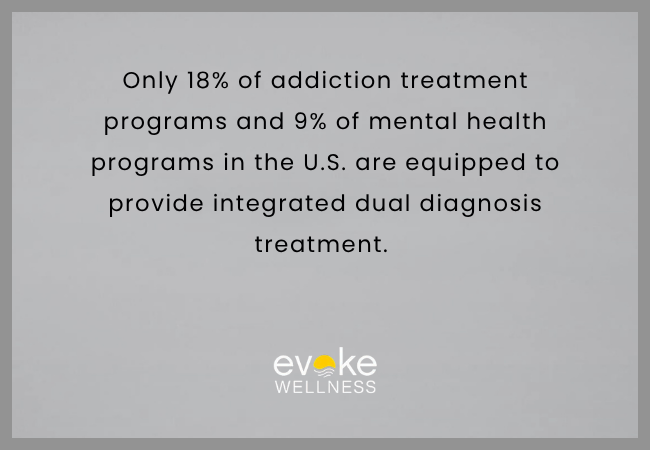For individuals facing the difficult reality of both a mental health disorder and a substance use disorder, healing can feel like an overwhelming challenge. These co-occurring conditions—commonly referred to as dual diagnosis—require a highly specialized and integrated form of care. Standard approaches to addiction or mental illness alone are rarely effective for dual diagnosis cases. Instead, patients need comprehensive, focused treatment that addresses the complex interplay between these two conditions. In this context, inpatient rehabilitation offers a level of structure, safety, and therapeutic depth that can be transformative.
In Ohio and across the nation, dual diagnosis cases are rising, partly due to increased awareness and diagnosis of mental health conditions, and partly due to the ongoing substance use epidemic. As families seek answers and individuals pursue recovery, the role of inpatient rehab becomes more crucial than ever. But what makes inpatient treatment particularly effective for dual diagnosis patients? The answer lies in several key aspects: integrated care, therapeutic intensity, a controlled environment, and the opportunity for long-term behavioral change.
The Complexity of Dual Diagnosis
To fully understand the importance of inpatient rehab, it’s essential to recognize the unique challenges dual diagnosis presents. Someone living with anxiety, bipolar disorder, depression, or PTSD may turn to drugs or alcohol to self-medicate. Conversely, prolonged substance use may trigger or exacerbate mental health symptoms. These issues are not separate—they’re often tangled together, with each one reinforcing the other in destructive cycles.
Traditional addiction treatment models that don’t address underlying mental health concerns leave the door wide open for relapse. Similarly, psychiatric care that fails to consider substance use may not equip patients with the tools they need for lasting recovery. This makes dual diagnosis one of the most difficult categories of behavioral health to treat effectively. That’s why an integrated approach—particularly in an inpatient setting—is essential.
Why Integration is Essential
At the heart of any effective dual diagnosis program is integration. This means treating both the mental health disorder and the substance use disorder simultaneously, with collaboration across all care providers. In an Intensive Inpatient Treatment Program in Ohio, this integration is not only possible but embedded into every aspect of the patient’s care plan.
In an inpatient setting, professionals from different disciplines—psychiatrists, addiction specialists, therapists, nurses, and case managers—work together daily to assess progress, adjust medications, and modify treatment plans. This level of coordination leads to more accurate diagnoses and personalized care that can adjust in real time to patient needs.
Furthermore, the overlap in symptomatology between disorders such as depression and alcohol withdrawal, or anxiety and stimulant use, means that having clinical experts in both domains is crucial. In an outpatient setting, the potential for misdiagnosis or under-treatment is much higher.
Structured Support Creates a Foundation for Change
One of the most powerful components of inpatient rehab is the structure it provides. For those navigating dual diagnosis, stability is often elusive. Emotional volatility, erratic sleep, poor nutrition, and inconsistent medication use can all derail recovery efforts. Inpatient rehab interrupts this chaos and provides a framework for healing.
From a predictable daily schedule to supervised medication management and consistent therapeutic interventions, inpatient programs help stabilize the patient’s condition. This stability is necessary for deeper therapeutic work to begin. Patients are no longer juggling the stresses of daily life—they can focus completely on their mental and physical health.
This controlled environment is also drug- and alcohol-free, eliminating access to substances during the most vulnerable early phase of recovery. Patients with co-occurring disorders often face stronger cravings, especially when untreated mental health symptoms intensify. The inpatient setting ensures a safe buffer from relapse while patients begin to rebuild coping strategies.
Therapeutic Intensity and Access
Another reason inpatient rehab is particularly effective for dual diagnosis is the intensity and variety of therapies offered. Dual diagnosis patients often require more frequent and diverse interventions than those facing a single diagnosis. In an inpatient setting, treatment is not limited to one or two sessions a week—patients engage in several hours of therapy each day.
These therapies may include:
-
Cognitive-Behavioral Therapy (CBT)
-
Dialectical Behavior Therapy (DBT)
-
Trauma-informed therapy
-
Group and individual counseling
-
Family therapy
-
Psychoeducation on mental health and addiction
In addition to these evidence-based approaches, holistic therapies such as yoga, mindfulness training, and recreational therapy are commonly incorporated to support emotional regulation and physical well-being. This multimodal approach allows dual diagnosis patients to explore various paths to healing, and to discover the strategies that work best for them.
In a high-quality Dual Diagnosis Treatment Program in Ohio, therapy is also customized. For example, a patient with bipolar disorder and opioid use disorder will have different clinical needs than a patient with PTSD and alcohol dependence. Inpatient treatment allows for this level of customization because clinicians can closely monitor symptoms, behaviors, and responses to treatment on a daily basis.
Building a Recovery Community
Isolation is a common thread in both mental illness and addiction. Many dual diagnosis patients withdraw from relationships, lose trust in others, or feel fundamentally misunderstood. One of the overlooked benefits of inpatient rehab is the formation of a recovery community.
Living with peers who are also navigating co-occurring disorders fosters connection and mutual understanding. Group therapy, shared meals, and structured activities encourage patients to build social skills, reduce shame, and practice empathy. These interactions can become the foundation for future support systems after treatment.
The emotional support found in inpatient rehab is especially important for dual diagnosis patients, who may have burned bridges with family or lack social resources. By connecting with others on the same path, patients begin to replace despair with hope.
Life Skills and Aftercare Planning
While immediate stabilization is the first goal of inpatient rehab, long-term recovery is the ultimate aim. This requires more than therapy—it requires preparation for life after treatment. Inpatient programs incorporate life skills training to help patients build resilience and confidence.
Patients learn practical skills such as time management, financial literacy, conflict resolution, healthy cooking, and exercise routines. They also receive coaching on how to navigate social triggers, set boundaries, and maintain medication compliance. These skills help individuals re-enter the world with a greater sense of competence and control.
Before discharge, a personalized aftercare plan is developed. This might include outpatient therapy, sober living, medication management, and peer support. A Residential Treatment Center in Ohio that specializes in dual diagnosis will ensure that every patient has a clear, structured path for continued care after they leave the inpatient setting.
Addressing Alcohol-Specific Co-Occurring Disorders
For many dual diagnosis patients, alcohol is the substance of choice. It is socially acceptable, widely available, and deeply entwined with emotional coping. However, the combination of alcohol use and mental illness is especially dangerous—alcohol is a depressant, worsens mood disorders, and impairs cognition.
In an Alcohol Addiction Treatment Program in Ohio, dual diagnosis patients receive targeted care that acknowledges both their dependence on alcohol and the underlying psychological issues that contribute to it. Detox may be medically supervised to ensure safety, especially for patients at risk of seizures or severe withdrawal. Once stabilized, therapeutic work begins to help patients identify emotional triggers and reframe their relationship with alcohol.
Why Choose Evoke Wellness?
At Evoke Wellness Hilliard, we understand the complexity of dual diagnosis and are deeply committed to helping individuals heal both their minds and their bodies. As a Mental Health Treatment Center in Ohio, we provide a compassionate, structured, and clinically integrated environment where patients can stabilize, learn, and grow. Our team of professionals brings deep expertise in addiction and mental health care, working together to design personalized treatment plans that evolve with the patient’s needs. Our goal is not just sobriety, but lasting transformation.
Conclusion
Dual diagnosis is a challenge that requires comprehensive, compassionate, and structured treatment. Inpatient rehab offers the safety, support, and depth of care necessary to address both substance use and mental health disorders effectively. Through integration, intensive therapy, and the development of real-life skills, patients can move from survival to stability and, ultimately, to a thriving life in recovery.
Whether you’re seeking help for yourself or someone you love, know that the right environment makes a difference. An Addiction Treatment Center Southwest Ohio like Evoke Wellness Hilliard can be the first step toward lasting recovery, providing the tools, community, and care needed for meaningful change.
If you’re ready to start that journey, call us today at 866.430.9267 to learn more about our programs and how we can help you or your loved one heal.
Frequently Asked Questions (FAQs)
What is dual diagnosis and why does it require specialized treatment?
Dual diagnosis refers to individuals who experience both a mental health disorder and a substance use disorder. These conditions are interconnected, and effective treatment must address both simultaneously through integrated and coordinated care.
How does inpatient rehab help with dual diagnosis?
Inpatient rehab provides 24/7 support, a structured environment, and access to intensive therapies that target both mental health symptoms and substance use patterns. This level of care is often essential for stabilizing patients and promoting long-term recovery.
Is inpatient rehab more effective than outpatient care for dual diagnosis?
For many dual diagnosis patients, inpatient rehab offers a more effective starting point due to its comprehensive support, medical oversight, and therapeutic intensity. While outpatient care is valuable for ongoing support, it may not be sufficient for initial stabilization.
What therapies are used in inpatient rehab for co-occurring disorders?
Inpatient rehab typically includes cognitive-behavioral therapy (CBT), dialectical behavior therapy (DBT), individual counseling, group therapy, trauma-informed care, and holistic approaches like mindfulness and fitness programs.
Can inpatient rehab help with alcohol and drug addiction along with depression or anxiety?
Yes, quality inpatient programs are equipped to treat substance addictions alongside conditions like depression, anxiety, PTSD, or bipolar disorder. These programs combine medical management with psychotherapy to treat both conditions together.
How long does inpatient rehab last for dual diagnosis patients?
Length of stay can vary, but most dual diagnosis patients benefit from longer treatment—typically 30, 60, or 90 days—based on individual needs and the severity of co-occurring disorders.



